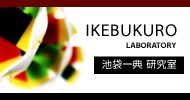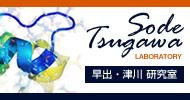Team:Tokyo-NoKoGen/Project/rhodopsin
From 2012.igem.org
- overview
- lux operon
- rhodopsin
- modelling
- Future work
- project
Sensory rhodopsin
Background
Halophilic archaea, such as Halobacterium salinarum and Natronobacterium pharaonis (N. pharaonis) show phototaxis by responding to changes in light color and intensity using receptors called sensory rhodopsin I and II (SRI and SRII). The SR proteins are seven-transmembrane retinylidene photoreceptors, which transmits blue light signal (λmax 487 nm) to their corresponding transducers HtrI and HtrII respectively. signals to Htr proteins via helix-helix interaction. Htr protein consists of two transmembrane helices and a cytoplasmic methyl-accepting and His-Kinase domain, and belongs to histidine kinase / phosphoreregulator two-component system for regulating cells’ flagellar motors for phototaxis (Ref. 1, 2).

Previous reports
It has been previously investigated to see how chimeric rhodopsin responds to light signals inside Escherichia coli (E. coli). Kwang-Hwan et al. constructed chimeric transducer proteins, by exchanging the Histidine-kinase domain of the bacteriorhodopsin from N. pharaonis with homologous chemotaxis transducers Tsr and Tar of E. coli and Salmonella enterica, (chemotaxis transducers of serine and aspartate respectively).They observed a phototaxis response of E. coli showed that it responds to light (Ref.3). It was also reported, that the sensory domain of Tar protein fused with histidine kinase domain of EnvZ protein of E. coli, functioned as a sensor protein to transmit signal received by the Tar sensory domain to the EnvZ two-component system (Ref.5). The histidine kinase domain of Tar protein and EnvZ protein are homologous. This year, we have deduced from the reported results, that because a fusion protein Tar-EnvZ functions inside E. coli, sensory domain of sensory rhodopsin fused with EnvZ protein should also function to transmit signal downstream of the two-component system.
Objective
Construction of a light sensor protein using sensory rhodopsin and two-component systemConstruction of a chimeric sensory rhodopsin and its cognate transducer from N. pharaonis, fused with the histidine kinase domain of EnvZ from E. coli. Express reporter gene GFP under promoter PompC, which is the corresponding promoter of the response regulator OmpR, activated by EnvZ. Evaluate the constructed vector inside E. coli, cultured under blue light induction.
Method
1.) BioBrick part BBa_K317028 (Tokyo-NoKoGen2010) consists of a chimeric rhodopsin, that is fused with the tar domain from S. enterica at NdeI site. Cph8 constructed by UTAustin 2004 BBa_I15010 consists of EnvZ from E. coli fused with cph1. NdeI site and SpeI sites were digested in both plasmids (fig.2)
2.) The digested parts were ligated together to fuse the EnvZ domain to the sensory rhodopsin (fig.2) Our new BioBrick part, BBa_K769000
3.) GFP expressed under a EnvZ/OmpR two-component system regulated promoter was digested at XbaI and PstI sites. BBa_K769000 was digested at SpeI and PstI sites, and both parts were ligated together (Fig.3)
4.) Construct made in 3.) was used to transform E. coli (ΔEnvZ)
5.) The transformants were pre-cultured in LB medium overnight at 37 degrees celcius, in the dark. (Fig.4)
6.) 60 μL of pre-cultures were inoculated into 3 mL LB medium inside a L form tube, and incubated either in the dark or under white light. OD595 and GFP fluorescence intensity were measured. (Fig.4)



Result
We show the result of GFP fluorescence (Fig.5). In E. coli with chimeric sensory rhodopsin, GFP fluorescence of cultured at dark condition is about 6-fold higher than cultured under white light!
Discussion
Our result shows the chimeric sensory rhodopsin worked under light condition to suppress expression of target genes.
Improvement
System of ColiExpress is converting information from E. coli to E.coli. We have to improve this chimeric sensory rhodopsin to activate expression of target genes under light condition.

Fig.5 Comparison of normalized GFPuv fluorescence under white light condition and dark condition.
Sensory rhodopsin : E.coli MG1655(ΔEnvZ)/pSB1C3-Pconst.-SRII-HtrII-EnvZ-PompC-GFP
Negative control : E.coli MG1655(ΔEnvZ)/pSB1A3-PompC-GFP
Positive control : E.coli BL21(DE3)/pSB1A3-PompC-GFP
An alternative light sensor – green light sensor
NpSRII is a sensory rhodopsin that can absorb a wavelength of blue light. Our project aim of this year was to construct E. coli that can pass on light signals to the neighbouring cultures of E. coli. The same E. coli will then emit light signal, after receiving one, so we must avoid the E. coli to emit the wavelength that itself absorbs. That’s why we were thinking of using another light receptor, a green light receptor using CcaS, a green light sensor derived from Synechocystis sp. PCC 6803. It is a protein that possess phycocyanobilin (PCB) as its chromophore, and can exist both as a green light absorbing form (λmax 535 nm) and red light absorbing form (λmax 672 nm). Previously, Tokyo-NoKoGen 2009 constructed a CcaS sensor domain fused with EnvZ histidine kinase domain, to pass on the green light signal to the EnvZ/OmpR two-component system (Fig.5). However, this BioBrick part has not yet been evaluated, and this year, we attempted to evaluate this part and connect it together with the lux operon, to induce expression of the lux system by receiving green light. Fig.5 A green light sensor constructed by Tokyo-NoKoGen 2009
Reference
[1] Xue-Nong Zhang et al. (1999) The specificity of interaction of archaeal transducers with their cognate sensory rhodopsins is determined by their transmembrane helices, Proc. Natl. Acad. Sci. USA
[2] Wouter D. Hoff et al. (1997) Molecular mechanism of photosignaling by archaeal sensory rhodopsin, Anmu. Rev. Biophys. Biomol. Struct.
[3] Kwang-Hwan Jung et al. (2001) An archaeal photosignal-transducing module mediates phototaxis in Escherichia coli, Journal of bacteriology
[4] Vishwa D. et al. (2003) Photostimulation of a sensory rhodopsin II/HtrII/Tsr fusion chimera activates CheA-autophosphorylation and CheY-phototransfer in vitro, Biochemistry
[5] Yoshida T et al., (2007) The design and development of Tar-EnvZ chimeric receptors, Methods Enzymol.
 "
"





